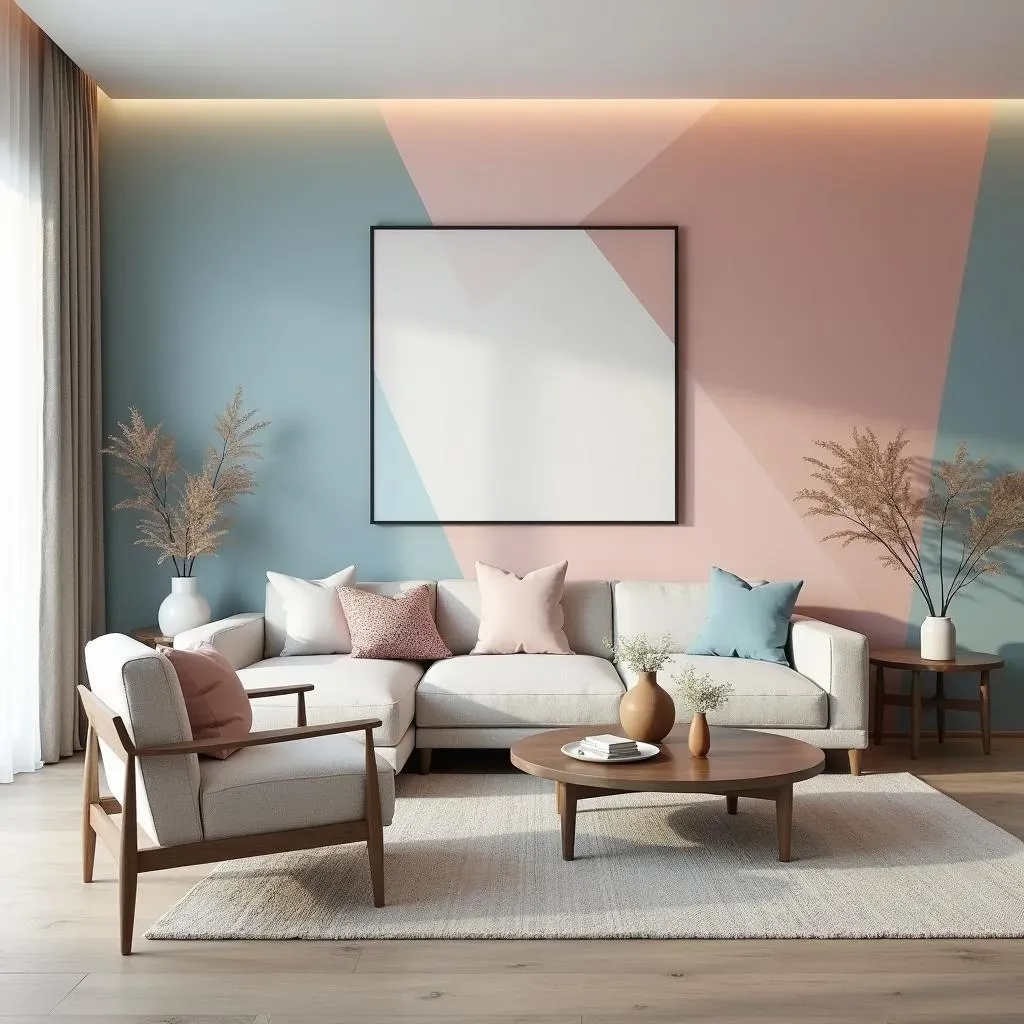Table of Contents
Ever stare at your living room walls, feeling like something's missing? You're not alone. A splash of color and a touch of creativity can completely transform your space, and that's where the magic of an accent wall comes in. We're diving headfirst into the world of living room paint ideas with accent wall, showing you how to add depth, personality, and a whole lot of style to your home. This isn't just about slapping on a different color; it's about creating a focal point, defining your space, and reflecting your unique taste. Whether you’re a seasoned DIYer or just starting out, this guide will walk you through choosing the right colors, exploring various design techniques, and even offer some budget-friendly solutions. Get ready to unleash your inner designer and turn your living room into a space you'll absolutely love. From bold geometric patterns to subtle textural effects, we'll cover it all, so let's get started and make those walls talk!
Choosing Your Perfect Living Room Accent Wall Paint
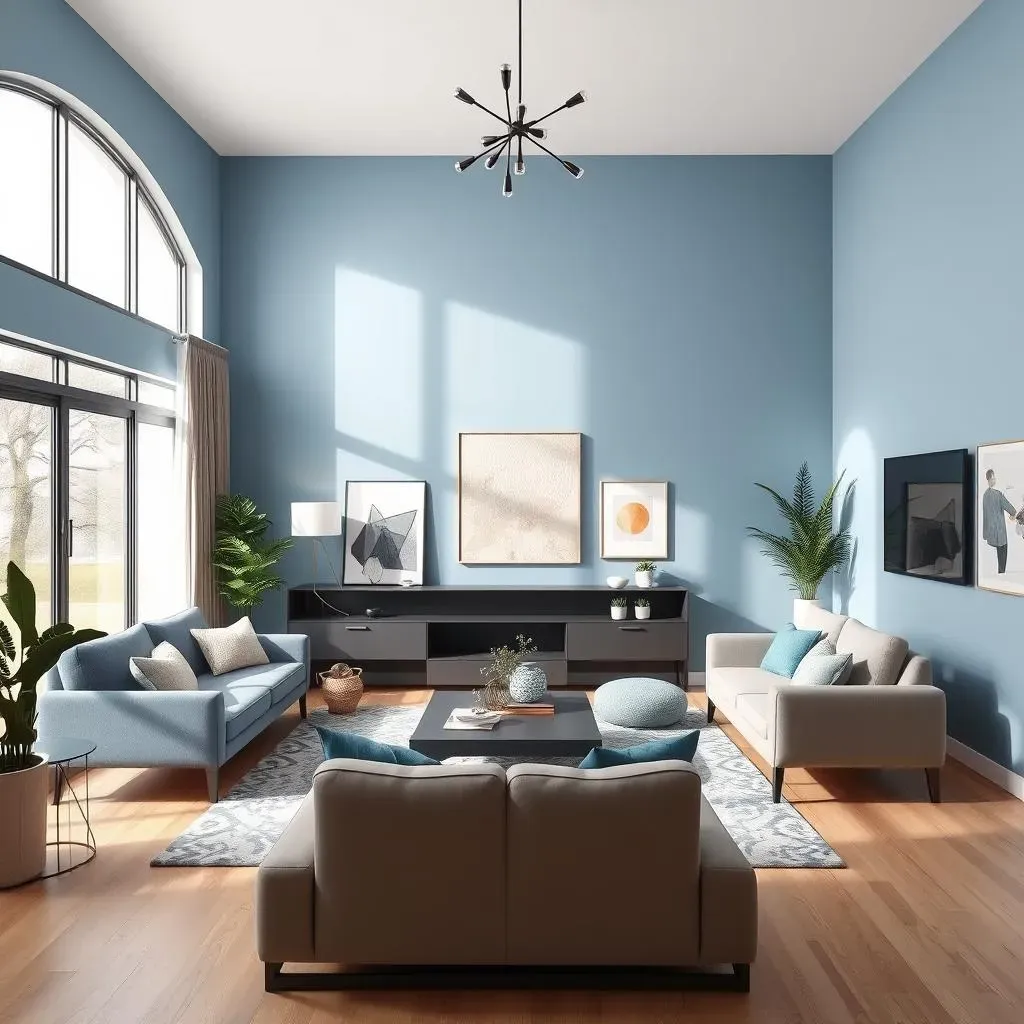
Choosing Your Perfect Living Room Accent Wall Paint
The Color Psychology
Okay, so you're thinking accent wall, right? Awesome! But before you grab the nearest can of paint, let's chat about color. It's not just about what looks pretty; it's about how it makes you feel. Think of your living room like a mood ring – what vibe do you want it to give off? Blues and greens? They're your go-to for calm and relaxation. Reds and oranges? Those are your energizers, perfect for a space that needs a bit of a spark. And don't even get me started on yellows, they're like a ray of sunshine. Pick what makes your heart sing, and your living room will sing along.
I know it sounds a bit "woo-woo", but trust me, color psychology is real. I once painted my office a bright, fire-engine red, thinking it'd make me more productive. Turns out, it just made me anxious and jittery. Switched to a calming blue, and suddenly, I could think straight again. So, yeah, color choice matters. Consider the feeling you're aiming for, and let that be your guide.
Considering the Room's Natural Light
Now, let's talk about light – and no, I'm not talking about your electric bill. The amount of natural light your living room gets will drastically change how a color looks. A deep, moody navy might look amazing in a room with tons of natural sunlight, but in a darker space, it could just look like a black hole. Similarly, a pale, pastel yellow might look like a washed-out nothing in a bright room but could be just the right touch in a darker one. It's all about balance. So, before you commit to a color, test it out in your actual room, at different times of the day. You can thank me later.
It's like trying on clothes under bad lighting in a dressing room – you think you've found the perfect outfit, then you step outside and realize it looks completely different. Same with paint. Grab those little sample pots, paint some swatches on your wall, and watch how the light plays with them. This step can save you a whole lot of heartache and repainting later.
Light Type | Color Impact | Considerations |
|---|---|---|
Lots of natural light | Colors appear brighter, more intense | Test with a sample, darker shades can be powerful |
Low natural light | Colors can look darker and muted | Opt for lighter shades, avoid dark tones |
Artificial light | Can alter the tone of the color | Test under your usual lighting conditions |
Matching Your Existing Decor
Alright, you've thought about the feels and the light – now, let's think about the stuff you already have. Your accent wall shouldn't be a random splash of color, it should work with your existing furniture, rugs, and art. Think of it as the star of the show, but still part of the ensemble cast. If your living room is all about cool grays and blues, a vibrant orange accent wall might clash. However, a teal or a deeper blue could add that extra oomph you're searching for. It’s all about creating a cohesive look. You want the accent wall to enhance what you've already got, not fight against it.
I once saw a living room where the accent wall was a bright, lime green, and the furniture was all dark, heavy wood. It looked like two separate rooms had been mashed together. Don't be that person. Take a good look at your existing color palette, and choose a paint that either complements or provides a subtle, intentional contrast. It's like putting together an outfit – you want everything to work together, not against each other.
Creative Accent Wall Designs with Paint
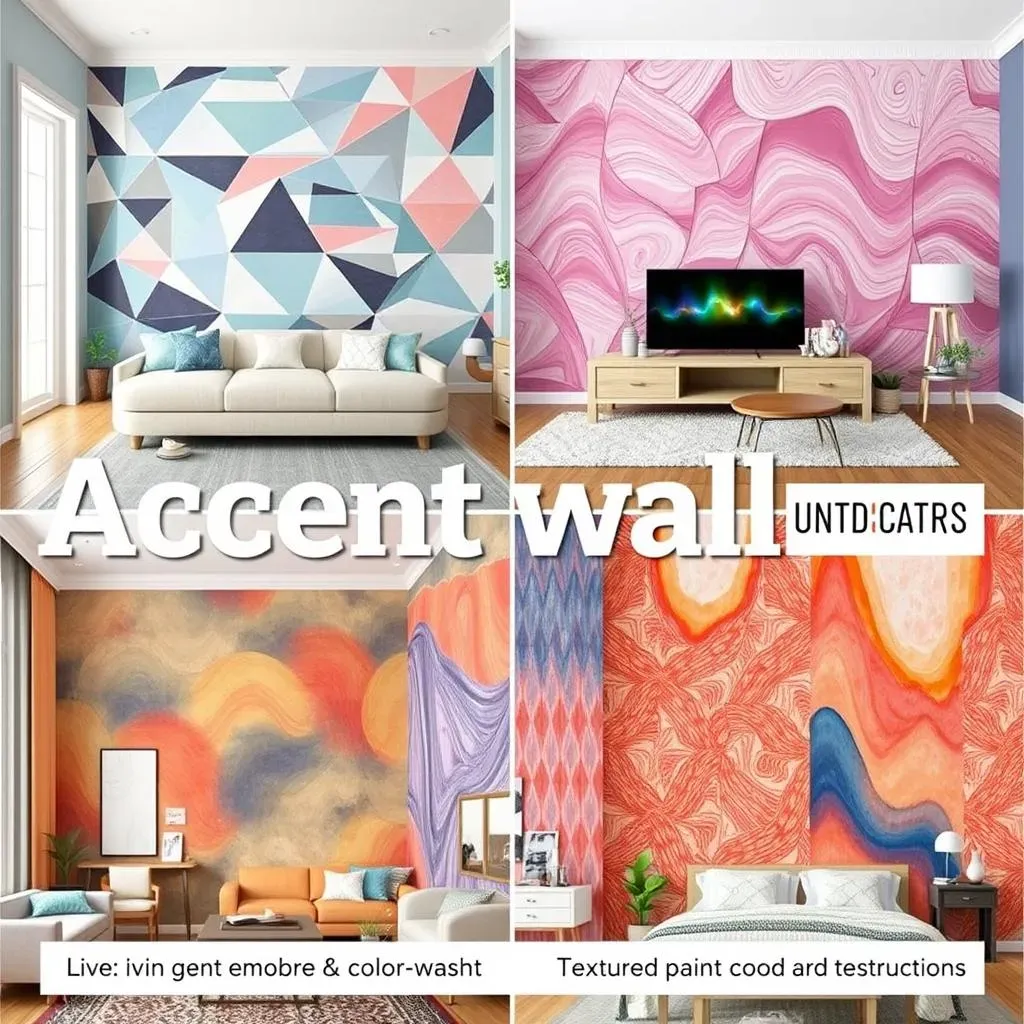
Creative Accent Wall Designs with Paint
Geometric Patterns
Alright, let’s get a little wild, shall we? Forget plain walls; let’s talk geometric patterns. We’re not just talking stripes here, although those can be super cool. Think chevrons, triangles, hexagons, maybe even a funky, custom design you come up with yourself. The beauty of geometric patterns is they can add a modern, edgy vibe to any space. It's like turning your wall into a piece of art, and the best part? You don't need to be a professional artist to pull it off. Just grab some painter's tape, a level, and your chosen colors, and you're good to go.
I remember trying to paint a chevron pattern in my old apartment, and let me tell you, it was a bit of a learning curve. My lines were wonky, and the tape kept peeling off. But hey, that's part of the fun, right? It doesn't need to be perfect. The imperfections add a bit of character. And when it was done, it looked amazing. It was the first thing people noticed when they walked in, and they always wanted to know how I did it. So, don't be afraid to experiment and get a little messy. It's all part of the creative process.
Ombre and Color Wash
If you're not into sharp lines and defined shapes, let's explore the dreamy world of ombre and color wash. Ombre, or gradient, is all about smoothly transitioning from one color to another. It's like a sunset on your wall, and it can add a real sense of depth and tranquility to your living room. You can achieve this by blending different shades of the same color, or you could even go for a more daring look by blending completely different colors together. Color washing, on the other hand, is more about creating a textured, watercolor-like effect. It's more subtle than a full-on ombre, but it adds a beautiful, almost ethereal quality to the wall. It's like giving your wall a soft, hazy glow.
I once tried a color wash technique in my bedroom, and it turned out way better than I expected. I used a mix of blues and greens, and it made the room feel like a calm, underwater oasis. It was super easy to do, and the result was so unique. It's a great way to add a touch of artistry to your space without having to be a master painter. Just grab a few colors, some sponges or rags, and get ready to blend and dab. You might surprise yourself with what you can create.
Technique | Description | Difficulty |
|---|---|---|
Geometric | Sharp lines and defined shapes | Moderate |
Ombre | Smooth transition between colors | Easy to Moderate |
Color Wash | Textured, watercolor-like effect | Easy |
Textured Paint and Stencils
Okay, let's take things up a notch with textured paint and stencils. Textured paint is not just about color; it's about adding a tactile element to your walls. Think of it as giving your wall a hug. You can use textured paint to create all sorts of effects, from subtle stucco-like finishes to bold, raised patterns. And then there are stencils. These are your secret weapon for creating intricate designs without having to be a freehand artist. You can use stencils to add patterns, motifs, or even words to your accent wall. The possibilities are truly endless. It's like giving your wall a voice, or a little bit of bling, depending on your style.
I remember using a stencil to create a damask pattern on a wall in my dining room, and it looked so elegant and sophisticated. It was a little time-consuming, but the end result was absolutely worth it. It added a touch of class to the room, and it was a great conversation starter. So, don't underestimate the power of texture and stencils. They're a great way to take your accent wall from ordinary to extraordinary. Just remember to use a light hand with the paint, and don't be afraid to experiment with different stencils and techniques.
BudgetFriendly Accent Wall Ideas for Your Living Room
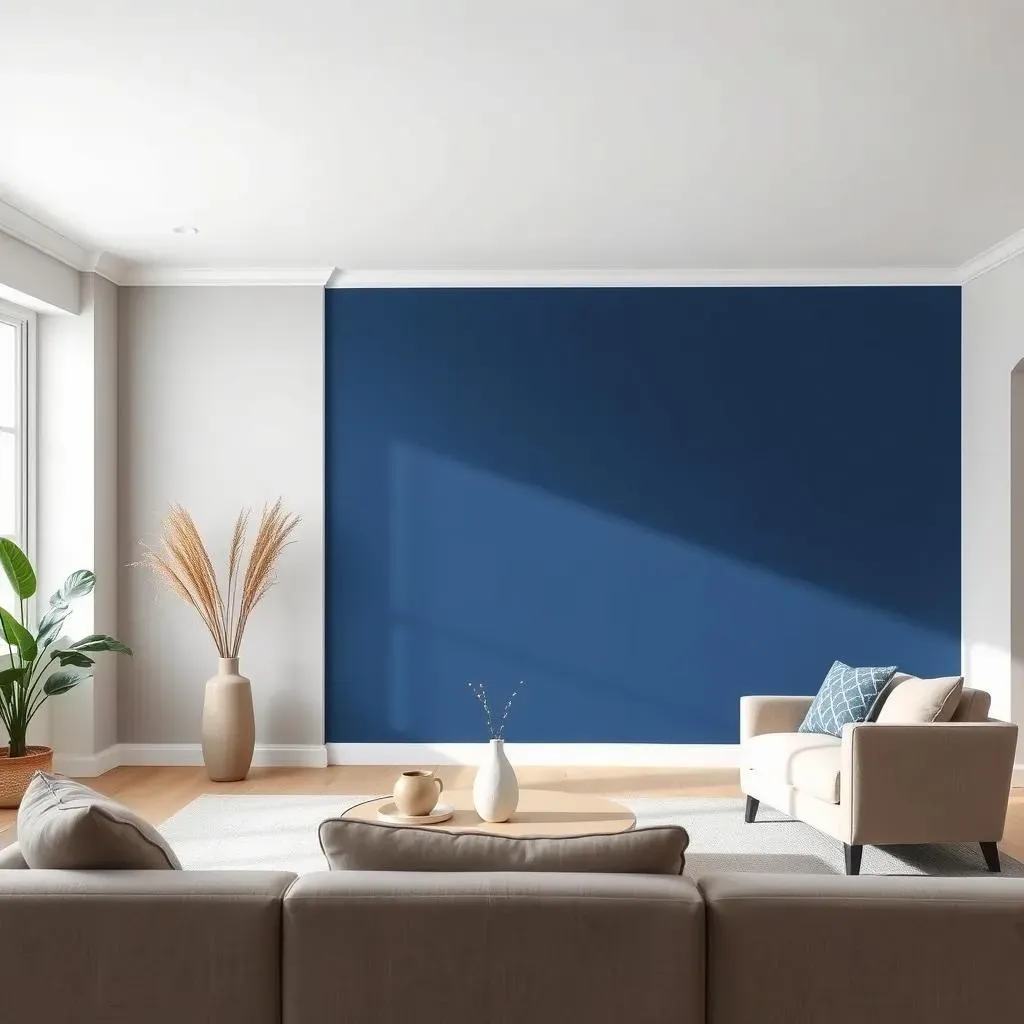
BudgetFriendly Accent Wall Ideas for Your Living Room
The Power of Paint
Alright, let's talk about the most budget-friendly option of them all: paint. Yes, a simple can of paint can work wonders. You don't need to be a millionaire to create a stunning accent wall. I'm talking about using leftover paint from previous projects, or even snagging a discounted can from the "oops" section at your local hardware store. You can create a bold, solid color accent wall, or get creative with patterns, stripes, or even color blocking. It's all about using what you have and thinking outside the box. Remember, the goal is to make a statement without breaking the bank. I once transformed my guest room using only leftover paint, and it looked like a completely new space. Don't underestimate the power of a good paint job. It’s like giving your room a makeover without needing a whole new wardrobe.
Wallpaper Wonders
Now, I know wallpaper might sound expensive, but hear me out. There are tons of budget-friendly wallpaper options out there. We’re not talking about the fancy, designer stuff; we're talking about peel-and-stick wallpaper that's easy to apply and even easier to remove. It's perfect for renters or anyone who likes to change things up every now and then. You can find all sorts of cool patterns, from geometric designs to floral prints, and it can add a lot of personality and texture to your living room. And the best part? You can do it yourself without needing to hire a professional. I’ve used peel-and-stick wallpaper to create a faux-brick accent wall in my kitchen, and it looks so real, people are always surprised when I tell them it's not actual brick. It's a great way to add visual interest without a hefty price tag. It's like putting a fancy dress on your wall, but without the designer price.
Method | Cost | Difficulty | Style |
|---|---|---|---|
Leftover Paint | Very Low | Easy | Versatile |
Discounted Paint | Low | Easy | Versatile |
Peel-and-Stick Wallpaper | Low to Moderate | Easy | Patterned, Textural |
DIY Decor as Accent
Let's get crafty! Instead of buying expensive art or decorative pieces, why not create your own? You can use things you already have around the house. Think old books, plates, or even fabric scraps to create a unique and personalized accent wall. You can arrange them in patterns, create a gallery wall, or even use them to create a 3D effect on your wall. The beauty of DIY decor is that it's completely customizable and it’s a great way to show off your personality. I once created a wall collage using old postcards and photos, and it became a real conversation piece. It's like turning your wall into a scrapbook that tells your story. So, gather your supplies, get creative, and don't be afraid to experiment. Your walls will thank you for it.
Living Room Accent Wall Paint: FAQs and Tips
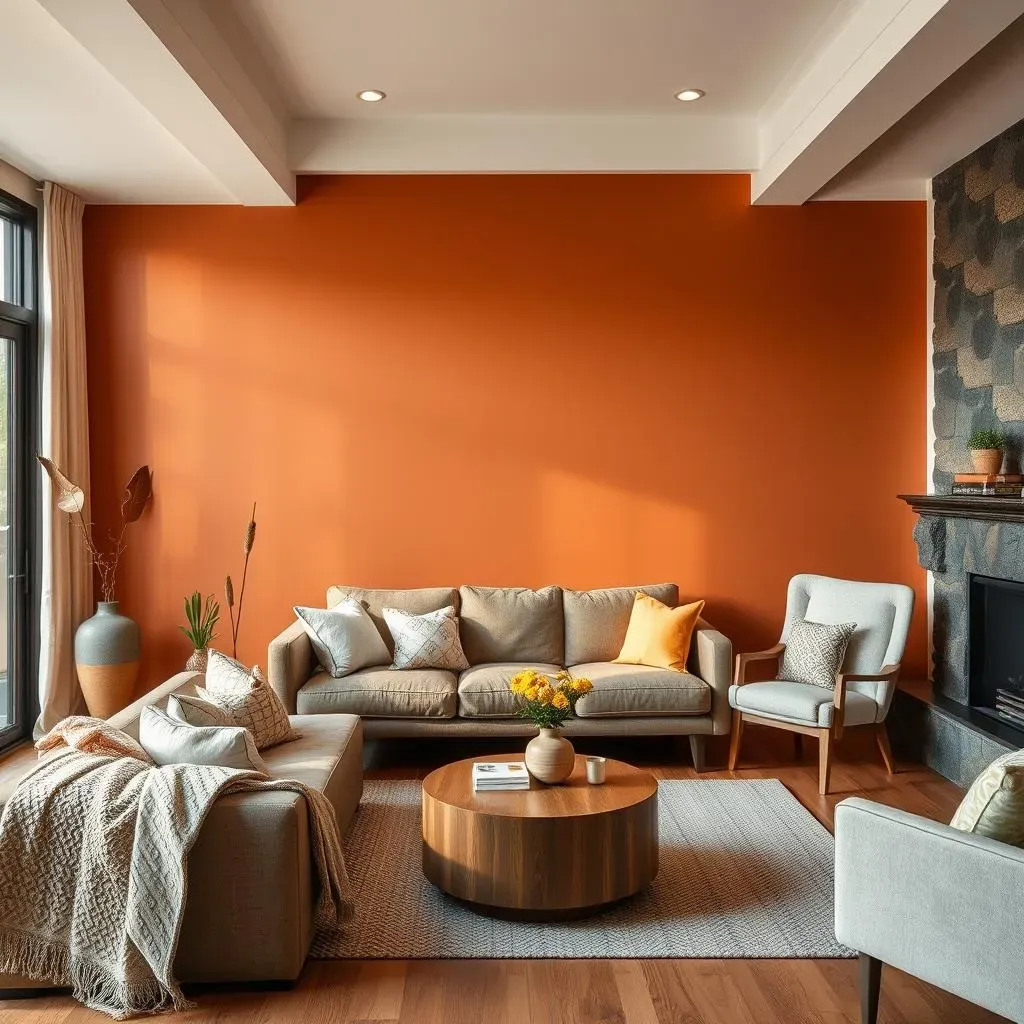
Living Room Accent Wall Paint: FAQs and Tips
How Do I Choose the Right Color?
Choosing the right color for your accent wall can feel like a big decision, but it doesn't have to be overwhelming. First, consider the overall mood you want to create in your living room. Do you want a space that feels calm and relaxing, or one that's vibrant and energetic? Think about the existing colors in your space, too – your furniture, rugs, and artwork. The accent wall should complement these, not clash with them. Don't be afraid to grab some paint samples and test them out on your wall. Live with them for a few days and see how they look in different lighting conditions. It's all about finding that perfect hue that makes your heart sing. I've made the mistake of choosing a color based on a tiny paint chip, only to find out it looked completely different on a full wall. So, test, test, test!
Also, think about the size of your living room. In a smaller space, a dark accent wall might make the room feel closed in, while a lighter color could make it feel more open and airy. In a larger space, you have more freedom to experiment with bolder colors. And don't forget about the finish of the paint. A matte finish will absorb light and create a more subtle look, while a glossy finish will reflect light and add a touch of shine. It's like choosing the right accessory for an outfit – it can make all the difference. Remember, there's no right or wrong answer, it's all about finding what works best for you and your space.
What Are Some Common Mistakes to Avoid?
Alright, let's talk about some common pitfalls when creating an accent wall. One of the biggest mistakes people make is choosing a color they like in isolation, without considering how it will look with the rest of their decor. It's like buying a cool-looking shirt without thinking about whether it matches anything in your closet. Another common mistake is not properly prepping the wall before painting. This means cleaning the wall, filling any holes or cracks, and using painter's tape to create crisp lines. Skipping these steps can lead to a sloppy-looking paint job, which is never a good look. I once rushed through a painting project and ended up with paint bleeding under the tape and a wall that looked like it had been attacked by a toddler with a paintbrush. So, take your time and do it right.
Also, don't be afraid to experiment, but don't go overboard. Sometimes, less is more. A simple, solid color accent wall can be just as impactful as a complicated pattern or design. And, for the love of all that is holy, don't choose a color just because it's trendy. Choose a color that you love and that makes you feel good. Trends come and go, but your personal style is forever. It's like choosing a hairstyle – you want something that suits you, not just what's popular right now. And finally, don’t be afraid to ask for help! There are tons of online resources and experts who can offer advice and guidance if you’re feeling stuck. Remember, it's supposed to be a fun and creative process, so don't stress too much about it. Now, go forth and conquer those walls!
Mistake | Solution |
|---|---|
Ignoring existing decor | Consider your furniture, rugs, and artwork |
Skipping wall prep | Clean, fill holes, and use painter's tape |
Going overboard with trends | Choose a color you love, not just what's popular |
Not testing colors | Test samples in your space before committing |
